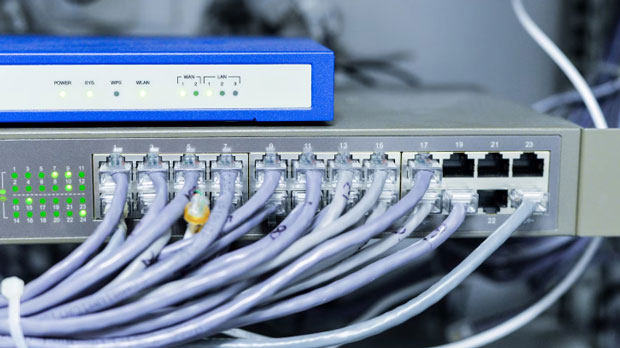In today’s digital landscape, the performance of proxy ip services is a key consideration for businesses and individuals seeking secure and efficient browsing experiences. Among the various options available, proxy IP services differ in terms of speed, reliability, and scalability. In this article, we will delve into the performance comparison of two prominent proxy IP providers, focusing specifically on their speed and effectiveness. By analyzing key metrics, including latency, uptime, and global coverage, we will examine which service offers the fastest experience for users in different contexts. Ultimately, this comparison aims to provide insights that can help you choose the most suitable proxy IP service based on your needs. Introduction to Proxy IP ServicesProxy IP services serve as intermediaries between users and the internet. By routing internet traffic through a proxy server, these services enable users to mask their original IP addresses, providing a layer of anonymity. Proxy IP services are especially useful for web scraping, content access, and security enhancement.There are different types of proxy servers, such as residential proxies, data center proxies, and mobile proxies. Each type has its advantages and specific use cases. When it comes to evaluating the performance of these services, speed is often one of the most critical factors.Factors Affecting Proxy IP SpeedWhen comparing the speed of different proxy IP services, several key factors must be considered. These factors play a significant role in determining how fast the proxy service will perform in real-world applications.1. Latency Latency refers to the time it takes for a data packet to travel from the source to the destination. In the case of proxy servers, latency is influenced by the physical distance between the user and the proxy server, the quality of the network infrastructure, and the number of hops required to reach the destination.2. Bandwidth Bandwidth is the amount of data that can be transferred over the network within a given period. Higher bandwidth typically translates to faster speeds, as the proxy server can handle more data at once. This is especially important for tasks that require high data throughput, such as streaming or downloading large files.3. Server Location The geographical location of the proxy servers can have a significant impact on performance. If the proxy servers are located far from the user’s physical location, the connection may experience higher latency. Conversely, a proxy server located closer to the user will generally provide faster speeds.4. Infrastructure and Technology The quality of the proxy server’s infrastructure and underlying technology also plays a major role in speed. Services that use high-performance data centers, advanced routing algorithms, and cutting-edge technology are likely to deliver faster speeds compared to those relying on outdated or less optimized systems.Performance Metrics ComparisonWhen comparing the speed of proxy IP services, it’s essential to analyze performance metrics such as latency, download speed, and upload speed. Let's break down these metrics to understand the differences in performance.1. Latency Comparison Latency is a crucial factor in determining how quickly a proxy IP service responds to user requests. A proxy with low latency will offer a smoother browsing experience, especially for tasks like web scraping or live streaming. Services with well-distributed global server networks tend to have lower latency, as the user can connect to a nearby server. A good proxy IP service will typically have latency levels of around 30ms to 100ms, with lower numbers being ideal. Proxies located in regions with advanced internet infrastructure are likely to deliver better latency.2. Download and Upload Speed Download speed is essential for activities that involve large amounts of data transfer, such as video streaming, file downloads, or accessing multimedia-heavy websites. Similarly, upload speed plays a critical role in applications like cloud backups or uploading content to websites. Fast proxy services should offer stable download and upload speeds with minimal fluctuations. Services that operate using high-capacity data centers and have optimized bandwidth allocations generally perform better in this regard.3. Uptime and Reliability Speed is not the only metric to consider when comparing proxy IP services. Uptime and reliability are just as important. A proxy service with high uptime ensures that users can rely on a stable connection without experiencing frequent outages or slowdowns. A proxy service with multiple redundant servers in different regions will offer better reliability, as the load can be distributed across different servers, reducing the chances of a bottleneck.Global Coverage and Speed DistributionGlobal coverage is another key factor that can influence the speed of a proxy IP service. A service with an extensive global network of proxy servers is more likely to deliver consistently fast speeds, regardless of the user’s location. Proxy services with servers in multiple countries allow users to select the optimal server location for their needs, ensuring low latency and high-speed connections.For example, if a user in Europe needs to access content hosted in Asia, a proxy with servers in both regions will be able to route traffic through the fastest possible path, reducing latency and improving overall speed.Optimizing Proxy Speed for Specific Use CasesDepending on the intended use case, the optimal proxy service may vary. Here’s a breakdown of how different users can optimize speed based on their specific needs:1. Web Scraping For web scraping, speed is crucial for gathering large amounts of data in a short amount of time. Proxies with high bandwidth and low latency are ideal for scraping large websites or multiple pages simultaneously. Additionally, proxies that offer rotating IP addresses can help distribute the traffic evenly, avoiding throttling or bans from target websites.2. Streaming and Gaming Streaming video content in high definition or engaging in online gaming requires a stable and fast internet connection. Proxies with low latency and high download speeds are essential for ensuring a smooth experience. For gamers, proxies with high-speed connections to gaming servers can reduce lag and improve response times.3. Anonymous Browsing and Security For users seeking enhanced privacy and anonymity, the speed of the proxy service still matters, but it may be less critical than in other use cases. However, proxies with higher speed ensure that browsing is not only private but also efficient. In such cases, the user may prioritize a proxy that can handle a large volume of traffic without compromising security.Conclusion: Speed as a Deciding FactorWhen choosing a proxy IP service, speed is one of the most important factors to consider. While other elements such as security, anonymity, and pricing are important, the speed of a proxy directly impacts user experience and task efficiency. Based on the comparison of various metrics like latency, bandwidth, and server location, users can make an informed decision about which service offers the fastest experience for their needs.By selecting a proxy IP service with optimized infrastructure, global coverage, and low latency, users can ensure a faster and more reliable browsing experience. However, the choice of proxy service will also depend on specific requirements, such as web scraping, streaming, or anonymity. Ultimately, understanding how different proxy IP services compare in terms of speed is crucial for making the best choice for any given task.
Apr 02, 2025
![arrow]()




























































